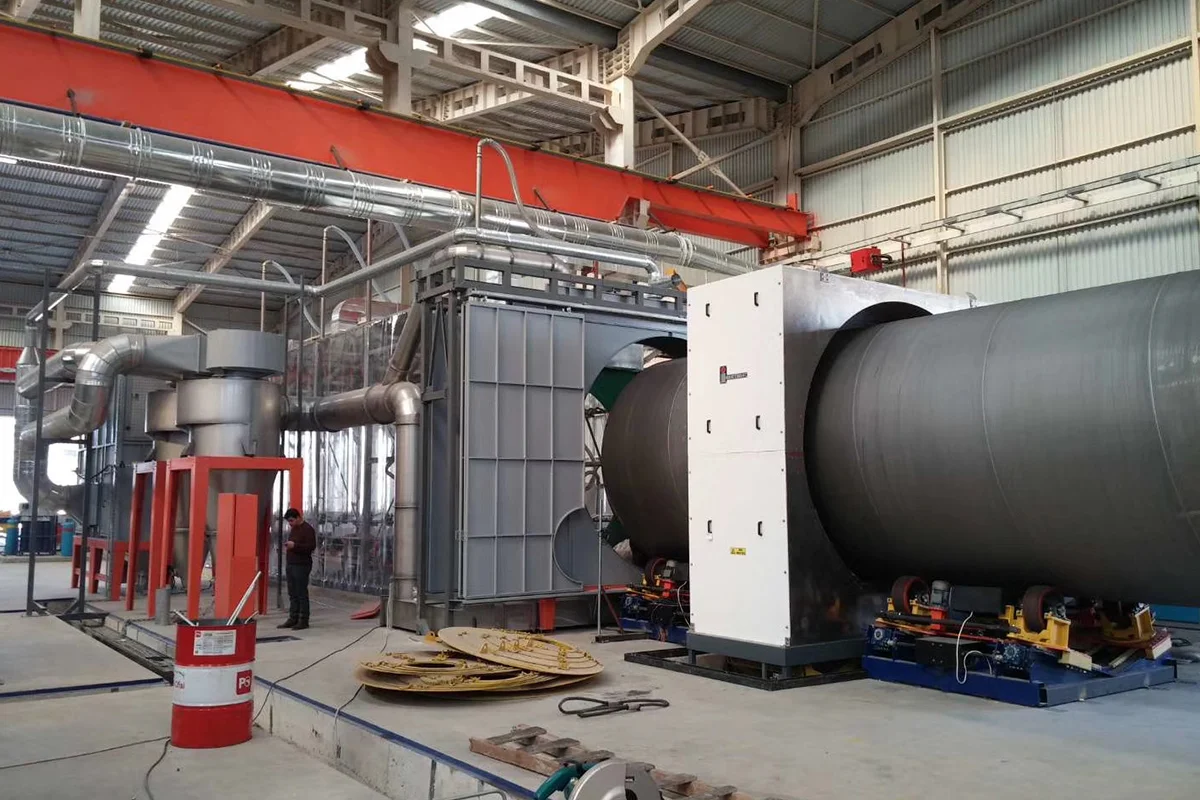
Clear records
history record

Products
Contact
Pipeline Powder Coating
Pipeline Powder Coating
I. Introduction
Pipeline powder coating is an automated surface treatment system widely used for coating metal, plastic, and other materials. With its high efficiency, environmental friendliness, superior coating quality, and wide applicability, powder coating equipment has become an essential tool in modern manufacturing.
II. Application Areas
1. Coating Industry
Automotive Manufacturing: Used for coating car bodies and components.
Home Appliance Manufacturing: Applied to refrigerator and washing machine exteriors.
Furniture Manufacturing: Surface treatment for metal and wooden furniture.
2. Construction Industry
Steel Structure Corrosion Protection: Used for corrosion-resistant coatings on bridges and building steel structures.
Pipeline Corrosion Protection: Applied to oil, natural gas, and other pipelines for anti-corrosion treatment.
3. Petrochemical Industry
Storage Tank Corrosion Protection: Applied to oil tanks and chemical storage tanks.
Pipeline Interior Coating: Used for the internal protection of pipelines transporting corrosive media.
4. Power Industry
Transmission Tower Corrosion Protection: Coating for corrosion protection of power transmission towers.
Power Generation Equipment: Applied to boilers, chimneys, and other equipment for corrosion and high-temperature resistance.
5. Shipbuilding Industry
Ship Hull Corrosion Protection: Used for anti-corrosion coatings on ship hulls and internal structures.
Offshore Platforms: Corrosion protection for offshore drilling platforms.
6. Aerospace Industry
Aircraft Components: Applied to fuselage and engine components for corrosion and high-temperature resistance.
7. Other Industries
Food Machinery: Anti-corrosion and sanitary coatings for food processing equipment.
Medical Equipment: Anti-corrosion and antibacterial coatings for medical devices.
III. Technical Overview
1. Basic Principles
Utilizes electrostatic adsorption to uniformly apply powder coatings onto workpiece surfaces. After curing, a durable coating is formed through an automated production line.
2. Core Process Flow
Pre-Treatment
Degreasing: Removes oil and contaminants from the workpiece surface.
Rinsing: Washes off residual degreasing agents.
Surface Conditioning: Enhances surface activity to improve coating adhesion.
Phosphating: Forms a phosphate layer to enhance corrosion resistance and adhesion.
Rinsing: Removes residual phosphating solution.
Drying: Fully dries the workpiece.
Powder Coating
Electrostatic Spraying: Uses electrostatic adsorption to evenly coat the workpiece with powder.
Manual Touch-Up: Manually sprays complex areas to ensure complete coverage.
Curing
Baking: Heats the coated workpiece in a curing oven to melt and solidify the powder coating into a durable layer.
Cooling: Naturally or forcibly cools the workpiece to room temperature.
Post-Treatment
Inspection: Evaluates coating quality, including thickness and adhesion.
Touch-Up: Locally repairs defects.
Packaging: Packs qualified products for shipment.
IV. Technical Advantages
High Efficiency and Energy Saving: High powder utilization reduces waste.
Environmental Protection: No volatile organic compounds (VOCs), meeting environmental standards.
Superior Coating Quality: Uniform coating with strong adhesion, corrosion resistance, and wear resistance.
High Automation: Reduces manual labor and improves efficiency.
Strong Adaptability: Suitable for various materials and complex-shaped workpieces.
V. Development Trends
1. Automation and Intelligence
Automation: Powder coating lines are becoming fully automated, reducing manual intervention and improving efficiency.
Intelligent Systems: IoT, big data, and AI technologies enable real-time monitoring, fault diagnosis, and process optimization.
2. Environmental Protection and Energy Efficiency
Eco-Friendly Materials: Use of low-VOC, heavy-metal-free powder coatings to minimize environmental impact.
Energy-Saving Equipment: Adoption of high-efficiency spray guns, recycling systems, and energy-efficient curing ovens to reduce energy consumption.
3. High Efficiency and High Quality
Advanced Spraying Techniques: Improvements such as electrostatic spraying and high-speed rotary cup spraying enhance efficiency and uniformity.
Superior Coating Performance: Advanced processes ensure coatings with excellent adhesion, wear resistance, and corrosion protection.
4. Flexible Production
Multi-Product, Small-Batch Capabilities: Adaptation to diverse product lines and small-batch production increases flexibility.
Quick Color Change Systems: Optimized systems reduce color change times and minimize material waste.
5. Digitalization and Information Management
Digital Production Management: Integration with MES and ERP systems enables full-process digital control.
Real-Time Monitoring: Sensors and data analytics optimize production efficiency and quality.
6. New Materials and Advanced Processes
Innovative Coating Materials: Development of nano-coatings and functional coatings to enhance surface performance.
New Curing Technologies: Adoption of low-temperature curing and UV curing reduces energy consumption and increases efficiency.










